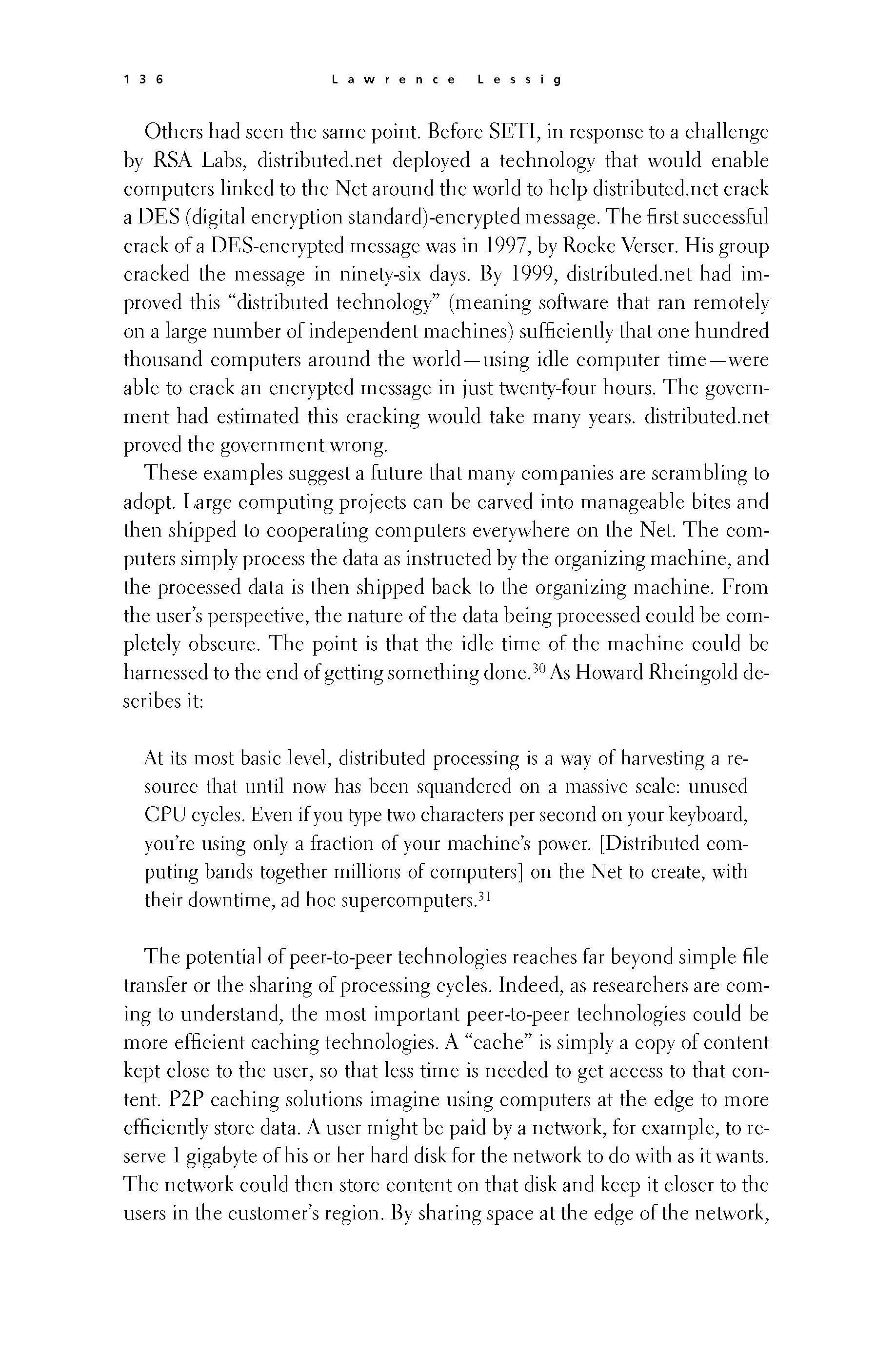 p135 _
-chap- _
toc-1 _
p136w _
toc-2 _
+chap+ _
p137
p135 _
-chap- _
toc-1 _
p136w _
toc-2 _
+chap+ _
p137
Others had seen the same point. Before SETI, in response to a challenge
by RSA Labs, distributed.net deployed a technology that would enable
computers linked to the Net around the world to help distributed.net crack
a DES (digital encryption standard)-encrypted message. The first successful
crack of a DES-encrypted message was in 1997, by Rocke Verser. His group
cracked the message in ninety-six days. By 1999, distributed.net had im-
proved this "distributed technology" (meaning software that ran remotely
on a large number of independent machines) sufficiently that one hundred
thousand computers around the world -- using idle computer time -- were
able to crack an encrypted message in just twenty-four hours. The govern-
ment had estimated this cracking would take many years. distributed.net
proved the government wrong.
These examples suggest a future that many companies are scrambling to
adopt. Large computing projects can be carved into manageable bites and
then shipped to cooperating computers everywhere on the Net. The com-
puters simply process the data as instructed by the organizing machine, and
the processed data is then shipped back to the organizing machine. From
the user's perspective, the nature of the data being processed could be com-
pletely obscure. The point is that the idle time of the machine could be
harnessed to the end of getting something done.[8-30] As Howard Rheingold de-
scribes it:
____ At its most basic level, distributed processing is a way of harvesting a re-
____ source that until now has been squandered on a massive scale: unused
____ CPU cycles. Even if you type two characters per second on your keyboard,
____ you're using only a fraction of your machine's power. [Distributed com-
____ puting bands together millions of computers] on the Net to create, with
____ their downtime, ad hoc supercomputers.[8-31]
The potential of peer-to-peer technologies reaches far beyond simple file
transfer or the sharing of processing cycles. Indeed, as researchers are com-
ing to understand, the most important peer-to-peer technologies could be
more efficient caching technologies. A "cache" is simply a copy of content
kept close to the user, so that less time is needed to get access to that con-
tent. P2P caching solutions imagine using computers at the edge to more
efficiently store data. A user might be paid by a network, for example, to re-
serve 1 gigabyte of his or her hard disk for the network to do with as it wants.
The network could then store content on that disk and keep it closer to the
users in the customer's region. By sharing space at the edge of the network,
[[136]]
p135 _
-chap- _
toc-1 _
p136w _
toc-2 _
+chap+ _
p137